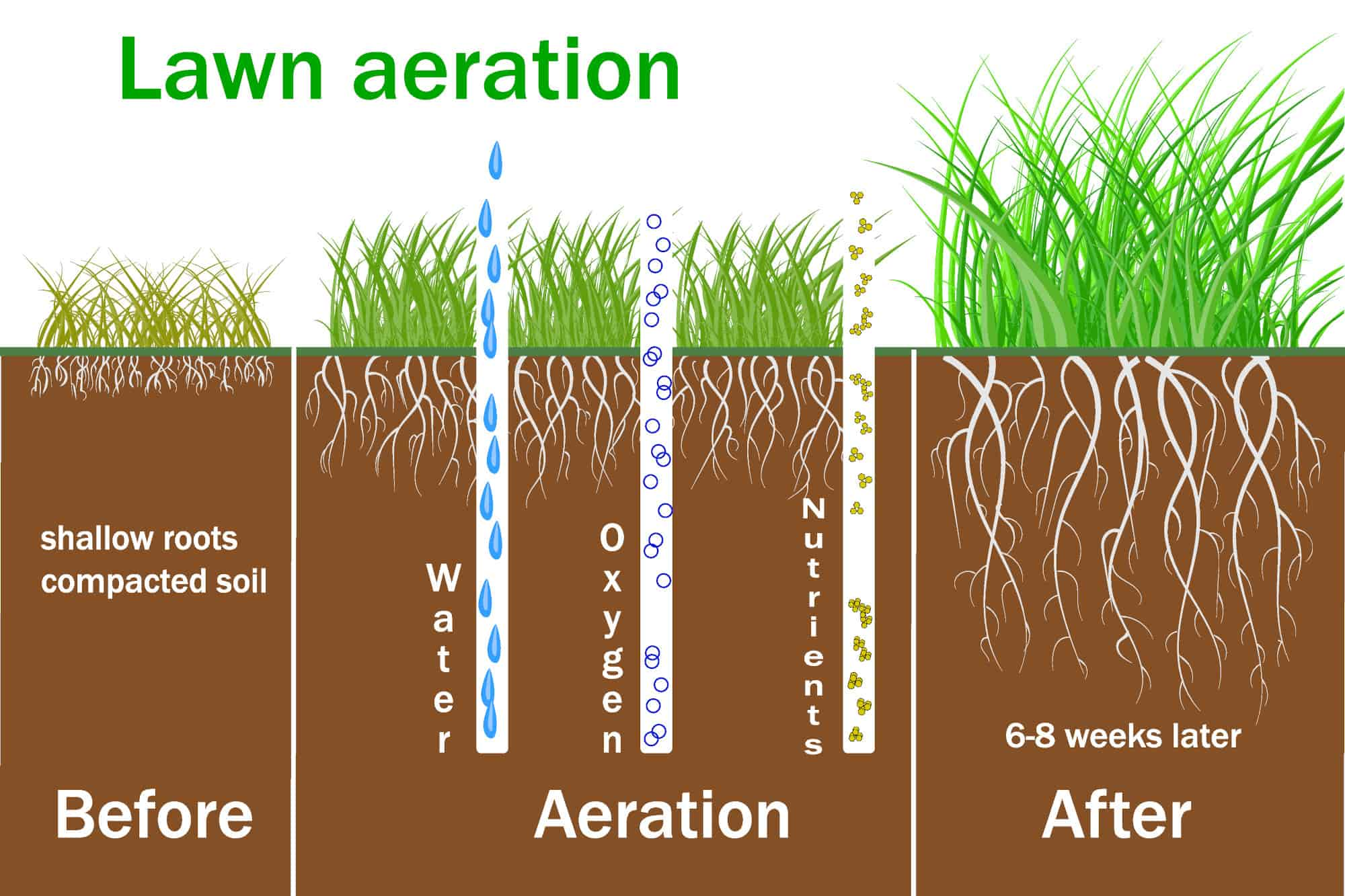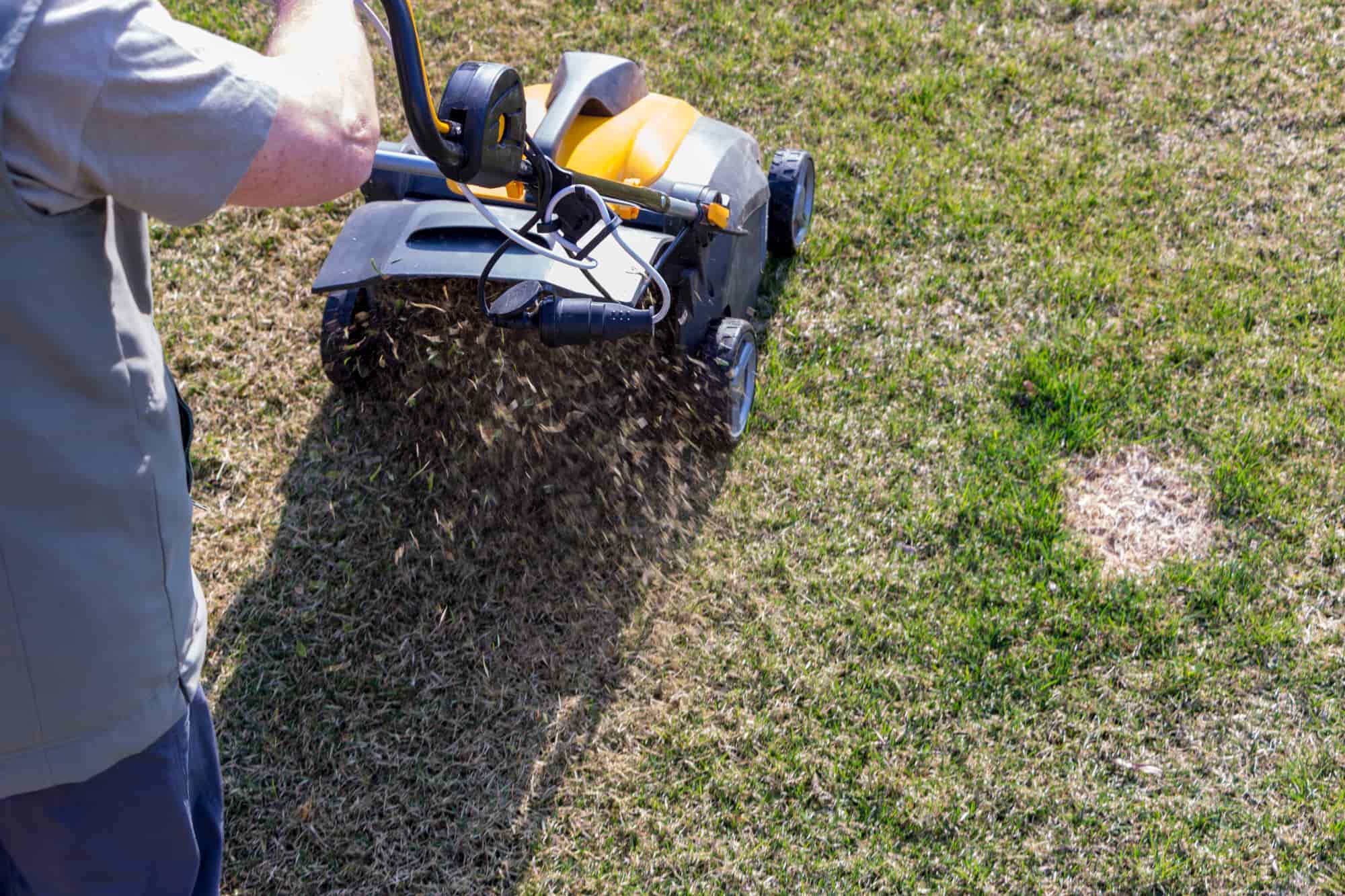A brief guide to Lawn Aeration
Lawn aeration is an important aspect in maintaining a beautiful lawn by ensuring enough nutrients are reaching the soil underneath the grass. A great way to achieve this is through a process called core aeration, also called lawn plug aeration. It is an essential aspect of lawn care because it allows air and water to penetrate grass.
What is lawn aeration?
Aeration is a lawn care process that involves puncturing the soil with small holes by use of a yard aerator in order to let air, water, and nutrients absorb in the grassroots. A core aeration service allows roots to grow strongly and deeply in order to produce a healthy lawn.
Why should you aerate your lawn?
It is important for you to aerate your lawn in order to alleviate soil compaction, which prevents proper air, water, and nutrient circulation in the soil. Soil compaction occurs when there are too many solid particles within a space.
Soil should be aerated on a regular basis because compacted soil can squish the roots, inhibiting their ability to function. Too much debris on the lawn can also prevent the roots from absorbing the necessary nutrients.
how does lawn aeration work

When is the best time to aerate your lawn?
The best time to aerate and overseed a lawn is dependent upon where you live. The best time to aerate lawns for cool-season grass is in the early spring or fall. Warm-season grass should be aerated in the late spring. This is because the grass will then be able to grow to fill in any open areas punctured in the soil.
How to tell if your yard needs to be aerated
You can perform a simple lawn aeration test that can be done using a screwdriver or pencil. Place either object into the soil. If it’s too difficult, the soil is compacted and needs to be aerated with a lawn aerator.
Your grass can benefit from aeration if your lawn:
- Is frequently driven on. The weight of a vehicle, even movers, can compact soil.
- Has high foot traffic. Children and pets running around the yard contribute to soil compaction.
- Was established as part of a newly constructed home. Often, the topsoil of newly constructed lawns is stripped or buried, and the grass established on subsoil has been compacted by construction traffic
- It takes too long to drain and you experience water puddling on the lawn after rain.
- It Shows heavy wear, is thinning, starting to patch, or bare.
- Has heavy clay soil.
- Has a thatch layer that is thicker than one-half inch. Thatch lies between the living grass and soil. Take a shovel to remove a slice of your lawn in order to look at grassroots in the soil. If they reach 4-6 inches deep, your lawn doesn’t have a compaction problem. If, however, roots extend only 1-2 inches, you should consider aerating.
- Feels spongy or dries out easily.
How to aerate your lawn
If you want to leave it up to the experts, you can get an instant customized quote from Lawn Love. We will match you with a lawn care professional in your area who can get the job done quickly and professionally.
Before Lawn Aeration
- Ensure the soil has enough moisture. Watering your lawn the day before aeration or aerating the day after it rained is suggested.
- Use marking flags to indicate the locations of irrigation or septic lines, sprinkler heads, and other buried utilities.
During lawn aeration
- Most aeration machines cover only a small percentage of soil surface per pass. Save your energy and resources by leaving unaffected areas alone. However, you will want to make multiple passes over the most compacted areas. If your lawn has been aerated in the past year, you should only need to do one pass. If it’s been over a year, make two passes with the aerator. Aim to create 20 to 40 holes per square foot.
- When using lawn plug aeration, you should allow the excavated soil plugs to dry and decompose to give your lawn a uniform appearance. These plugs contain microorganisms that digest lawn thatch. You can break the decomposed soil plugs up by going over them with a lawnmower or a rake.
After lawn aeration
- It is highly suggested to fertilize and seed lawns immediately after the following aeration. For soil that is heavily compacted, cover the lawn with a quarter-inch of compost and rake so it falls into aeration holes.
- Water your lawn a few extra times after aeration, especially when in hot or dry weather.
- Lawn aeration brings up weed seeds from lower soil levels. To prevent weeds from growing, plan to use a pre-emergent herbicide in the spring following fall aeration for cool-season turf. For warm-season grass, apply the herbicide the fall following aeration. Note: Do not apply a pre-emergent herbicide during the same time of reseeding.
- Continue basic lawn care practices such as proper fertilizing, watering, and mowing.
If your lawn is a good candidate for lawn aeration, it’s important to make it a part of your lawn care process. Aeration is a crucial practice towards allowing it to breathe again and achieve a lush and beautiful lawn.

What tools should be used to Aerate Your Lawn?
It is generally recommended to use a lawn aerator in order to get the job done efficiently and effectively. Depending on the task at hand, you can select a lawn aerator based on the types described below.
You can also use your hands or a pitchfork to aerate small sections of a lawn, but this can be tedious and is not advised for large areas.
lawn pro operating aeration machine on lawn
Types of Lawn Aerators: Plug aerator vs. Spike aerator
There are two main aeration lawn tools: a spike aerator and a plug aerator.
Spike lawn aerators allow you to poke holes into the soil with a fork while plug aerators remove a small section of grass or soil from the lawn. With a spike aerator, you simply use the tool to poke holes into the ground with a solid tine. It’s important to note that simply poking holes can be less effective and can cause more soil compaction if done incorrectly.
For optimal results, it is advised to use a lawn aeration tool that will remove plugs of soil. This is especially true in areas with heavy clay soil.
If your yard could benefit from aeration and you need the best, give us a call us, or get a free quote online to be connected with a lawn specialist. Your yard will thank you.

